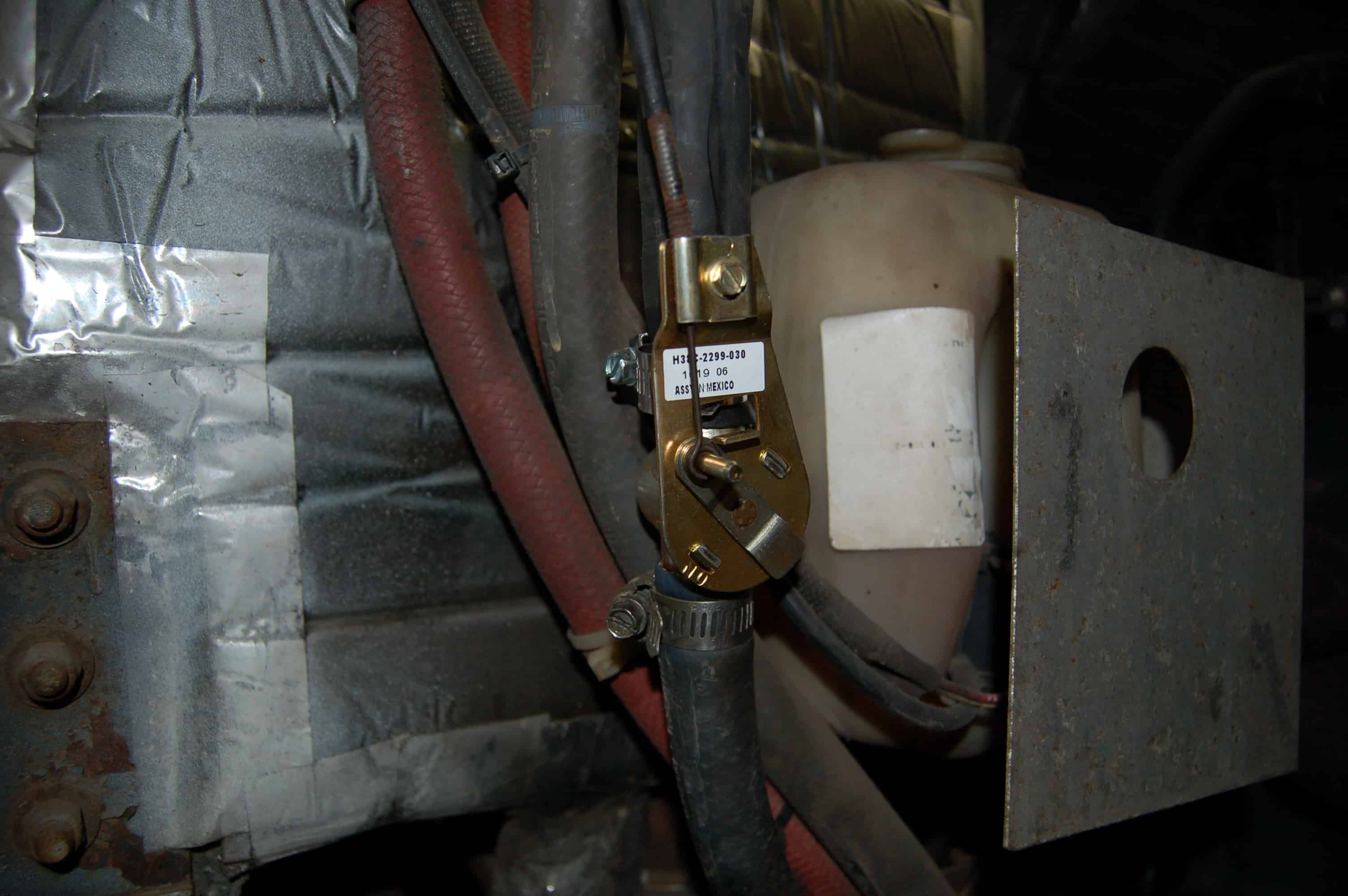Truck heater control valves
By Chris Tyson, MACS heavy duty contributor
We have several Class 8 trucks in our fleet and when temperatures begin to drop outside many of their owners visit our shop for heater-related repairs. That’s exactly what happened when the operator of a 1992 Marmon 57S dropped his truck with a no heat complaint. It was a pretty quick diagnosis too, considering that the temperature knob on the dashboard wouldn’t slide from cold to hot (without the risk of breaking it). It also didn’t take long to feel the heater hoses and find warm coolant on one side of the heater control valve, while the other side was relatively cool. After disconnecting the cable, the dash control moved freely, so we determined a replacement valve should do the trick.
That’s not as easy as it sounds when dealing with a truck this old. Most parts can still be found (especially with the help of some MACS distributor members), but sometimes it takes trial and error to get it right. We looked through catalogs, matched up pictures, ordered a replacement valve and installed it. Now the truck has heat but the dash control is backwards; we get heat when the knob is on cold!
Closer inspection of the valve shows us why. This type of valve is directional, meaning that when the cable pulls up on the pin, water is allowed to flow; however, when the cable pushes down, the flow is cut off. See Figure 1. We need the opposite valve, which closes when the cable is pulled up. It appears they could have set this valve up to be more universal if there was a pin on the other side of the arm and a cable clamp opposite the bolt, but that might not work in other situations. Either way, we’re going to need a new valve.
Caption Figure 1: This heater control valve is universal, but directional.
This is where details really matter because there are a multitude of valve variations. Some valves are manually controlled, and the operator has to physically get out of the cab to open or close a valve (or valves) in the engine compartment any time they require heat. Others, such as this Marmon are cable operated, while still others are controlled by vacuum or even electric motors. Then there’s the configuration of the valve itself which is dependent on how it’s mounted and where it’s located under the hood. You can get “T” valves, 90° valves (in ↰, ↱, ↲, ↳, ↴, ↵, and other orientations), offset valves where the inlet position is higher or lower than the outlet (rather than being directly inline), various sized ports (such as ¾” inlet and ⅝” outlet), and even valves with differing degrees of cable-to-valve-orientation offset. These details seem small, but are necessary to coordinate heater valve operation with the operator’s dashboard controls.
Our driver will have to live with this arrangement until the new valve arrives. In the meantime, details like these need to be shared with other technicians to help them avoid making the same mistakes. That’s part of what makes a MACS membership so important! Do you have a similar story?
Do what I did and send it to steve@macsw.org and share your experience with the MACS community. You’ll be glad you did!


Great Article, love the power around trucks.